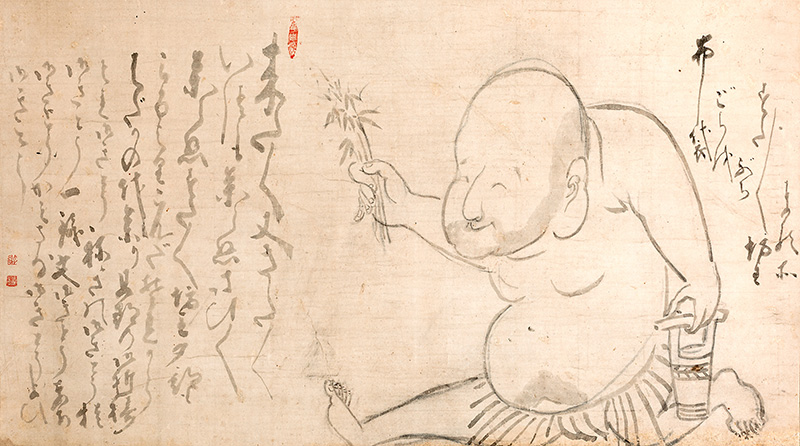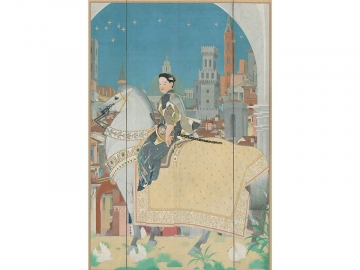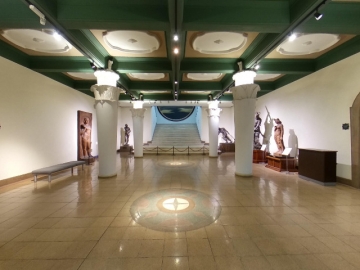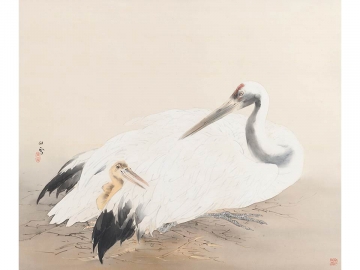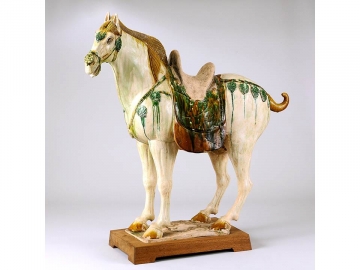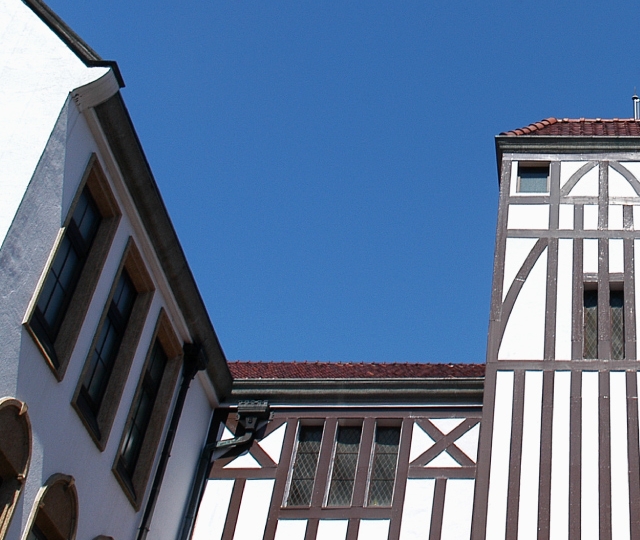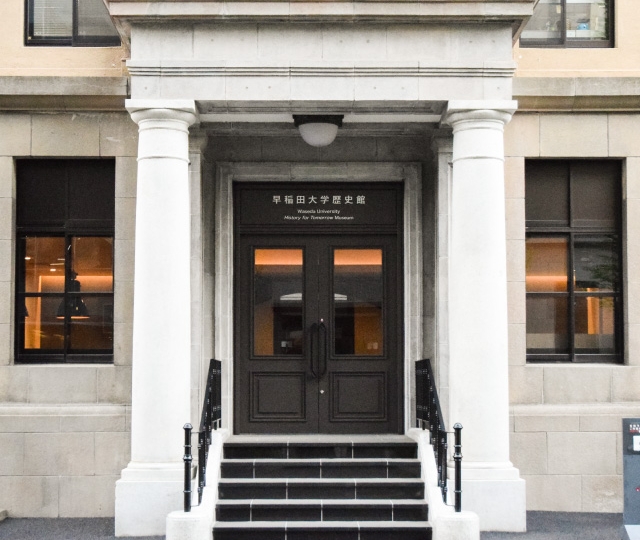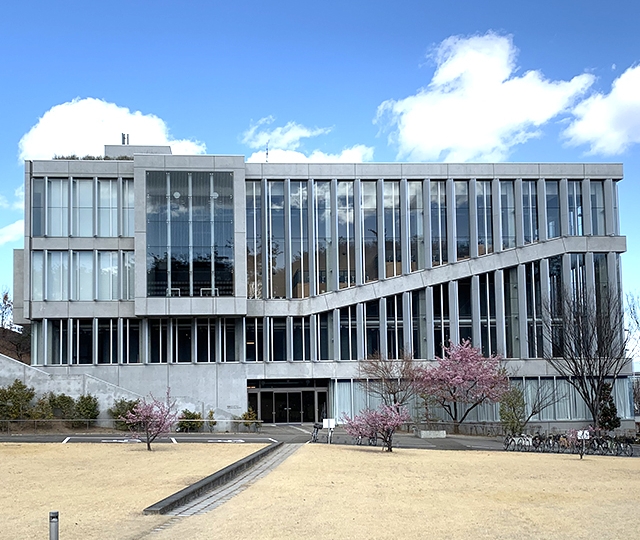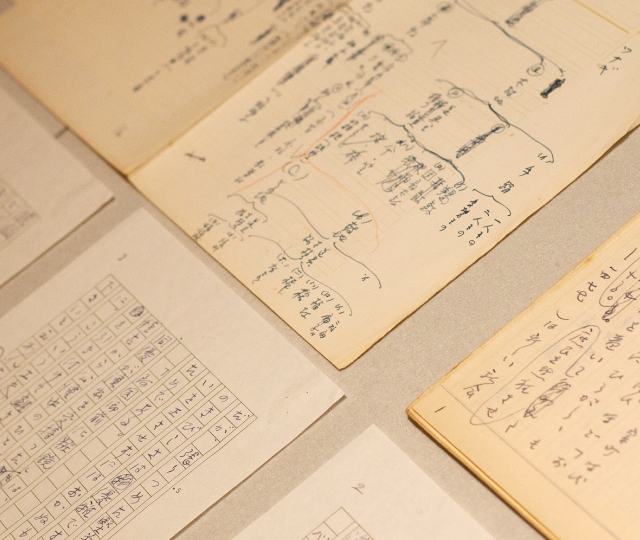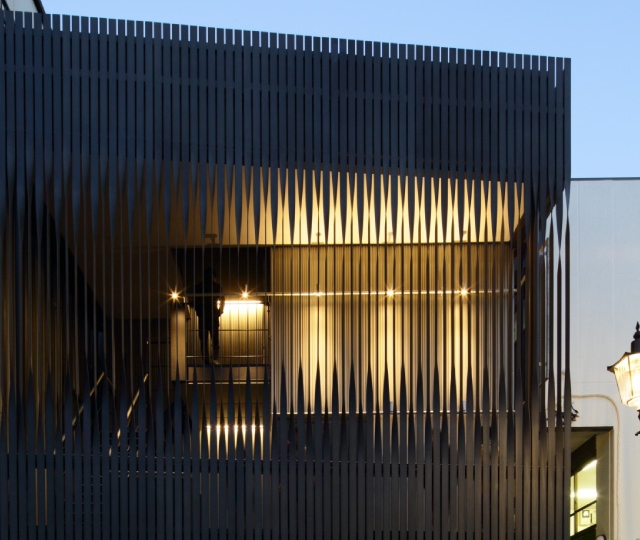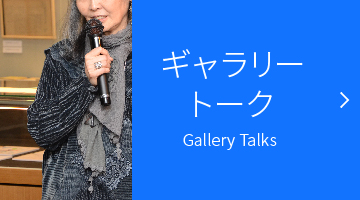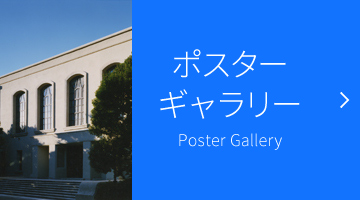タイトル
布袋すたすた坊主図
ほていすたすたぼうずず
Hotei-sutasuta-Bōzu(Busy Busy Beggar)
作者
白隠慧鶴(1685~1768)
Hakuin Ekaku (1685-1768)
技法
紙本墨画
Ink on paper
サイズ
52.8×94.0㎝
制作年
江戸時代
Edo period
備考
蔵品番号 禅A-1
Collection No. 禅A-1
概要
向かって右側に「布袋どらをぶち、すたすた坊主(に)なる所」と、この図の説明が書かれている。布袋は中国唐末に実在した僧で、未来仏である弥勒の化身とされた。「すたすた坊主」は江戸時代に、忙しい商人の代わりに社寺への参詣を行うと称して家々に立ち寄り、図の左側の賛(「来た来たまた来た来た、いつも参らぬ、さひさひ参らぬ、すたすた坊主、ゆんべも三百はりこんだ、それからはだかの代参り、…」)のような口上をおもしろおかしく述べて物乞いをして歩いた願人坊主のこと。また、白隠が住んでいた沼津あたりで行なわれた寒行に、裸の和尚が手に笹や銅羅を持ち、手桶で水をかぶりながら祈祷して廻るものがあり、この図の坊主の姿はそれに倣っているようである。「どらをぶつ」は道楽にふけって放蕩することを指すが、ここでは道楽が過ぎた布袋が「すたすた坊主」になってまで、人々の福を願って代参いたしましょう、という意味なのであろう。白隠70代半ばの作と推定される。
A description of this drawing is written on the right. It says that it shows Hotei turning into a Suta Suta Bozu because he rang a gong. Hotei (or Budai in China), is a semi-historical Chinese monk of the end of the Tang period. He was said to be an incarnation of Miroku Bosatsu (Bodhisattva Maitreya), a future Buddha. Suta Suta Bozu were beggar priests who went from door-to-door to entertain people with humorous speeches. They also visited shrines and temples on behalf of busy merchants during the Edo period. The writing on the left of the illustration shows an example of their messages. Roughly translated, it says, “Here I am again, you never go, you haven’t gone in a while. I lost 300 again last night. Since then, I have been going around naked to make visits to shrines and temples on people’s behalf.” A winter aesthetic practice around Numazu, where Hakuin lived, was for naked priests to walk the streets with dwarf bamboo or gongs in their hands, chanting prayers while splashing water from a pail on themselves. It looks like the priest in this drawing is imitating this. Ringing a gong here refers to indulging too much in pastime and self-indulgence. Here, it probably means that Hotei will pray for people’s happiness and go to the temples and shrines on their behalf even if it meant that he would become a Suta Suta Bozu. The work is believed to have been painted when Hakuin was in his mid 70s.

